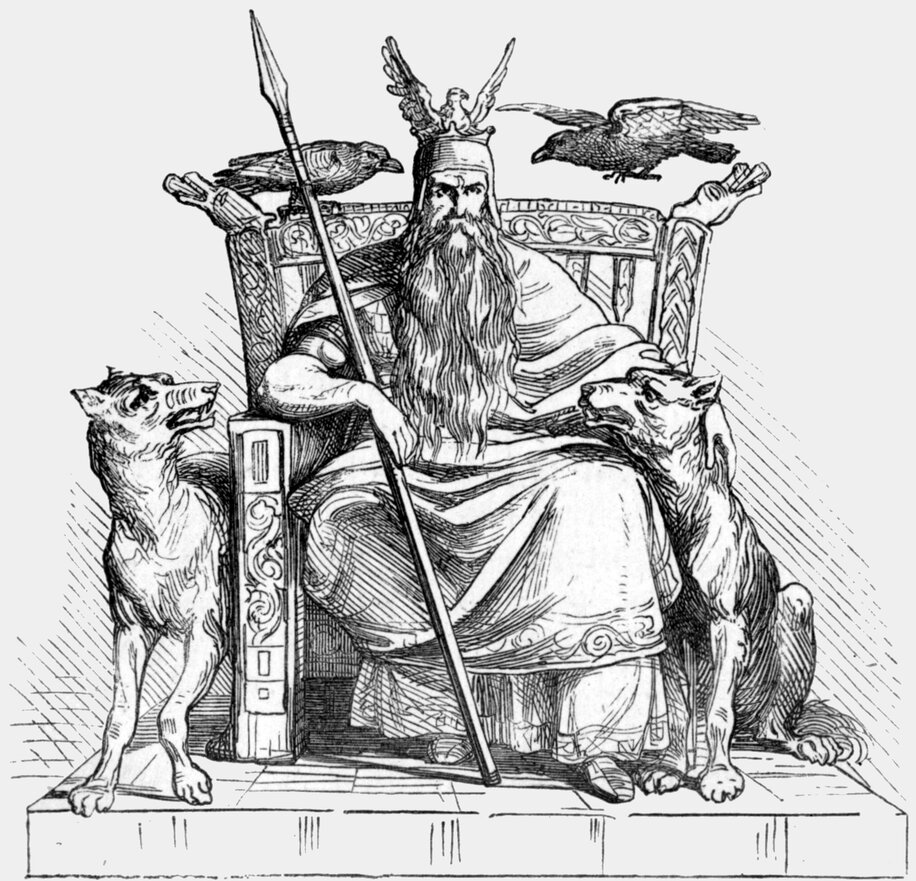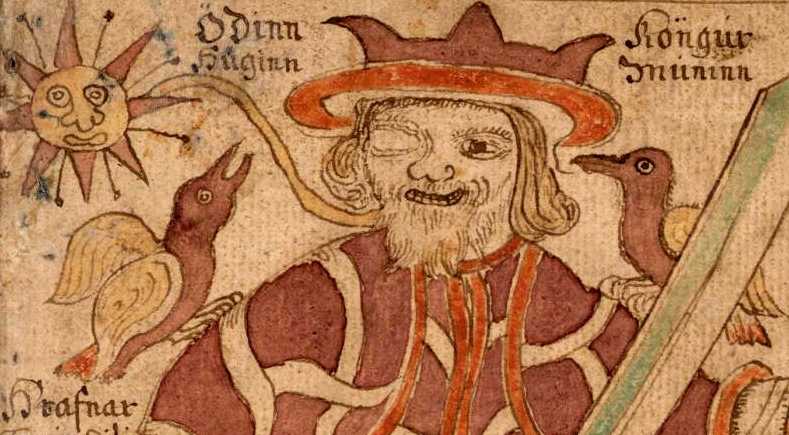Huginn and Muninn were Odin’s pair of ravens in Nordic myth. Huginn is old Norse for “thought,” and Muninn means “memory.” Depictions often showed these black birds sitting on or flying around Odin’s shoulders. At sunrise every day, Odin would send them to gather news from across the nine realms and to report back to him at breakfast time.
The role of Huginn and Muninn in Norse Mythology
Huginn and Muninn’s names, “thought” and “memory,” are very characteristic of Odin. Odin’s thirst for wisdom and knowledge was insatiable, and it would tie in with this desire to have winged messengers providing him with news of the nine realms every day.
The god Odin was a devotee and practitioner of the magic called seiðr. Seiðr has associations with animals in that Freyja, for example, owned a cloak of cat fur and a fjaðrhamr, or cloak of falcon feathers. Shapeshifting into animals was also a feature of Seiðr, and it could be that Odin used the ravens as “spirit animals” or “fylgja,” warging into their minds and seeing through their eyes as they flew across the nine realms.
Corvids, especially ravens, were also synonymous with battles, especially the aftermath when they would feast on the available carrion. Huginn’s name appears in many Old Norse phrases such as blood (known as “the drink of Huginn”) or warriors (“those who make Huginn’s claws and beak red”).
What is the Difference Between Huginn and Muninn?
Muninn appears in literature but not as much as Huginn. Odin worried about them coming back to Valhalla from their daily flights, especially Muninn. Why he was less concerned about Huginn is unclear.
Huginn has nine mentions on skaldic.org. He appears in the Gísl Magnkv, for example:
The billowing banners blew above the head of Sigurðr’s father [Magnús], and gleaming Huginn rejoiced. I saw that leader fighting for victory with the sharp sword with the greatest glory.
Gísl Magnkv 19 II – Skaldic Org
Muninn, in contrast, has only two.

Legends of Huginn & Muninn in Norse Mythology
Poetic Edda
The poem Grímnismál from the Poetic Edda collection provides the background to the story of Odin’s ravens searching the nine realms for news.
Odin comments:
Hugin and Munin
Grímnismál – Germanic Mythology
Fly every day
All over the world;
I worry about Hugin
That he might not return,
But I worry more about Munin
Prose Edda
The Prose Edda, a 13th-century Old Norse textbook by the Islandic politician, historian, and poet Snorri Sturluson, reveals that the Old Norse world knew Odin as “Hrafnaguð” or the “God of Ravens.” It and the Third Grammatical Treatise also tell us that Huginn and Muninn perch on Odin’s shoulders.
Two ravens sit on his shoulders and whisper all the news that they see and hear into his ear;
Nordic Heritage
they are called Huginn and Muninn.
He sends them out in the morning to fly around the whole world,
and by breakfast,
they are back again.
Thus, he finds out many new things,
and this is why he is called the raven god.
Heimskringla, also by Sturluson, is the most famous work about the Old Norse kings. It tells us that Odin gave Huginn and Muninn the power of speech.
The 9th-century poem Hrafnsmál describes a conversation between a Valkyrie and a raven about the first king of Norway, Harald Fairhair.
Hugin and Munin’s Depictions
Runes on Thorwald’s Cross on the Isle of Man show a man with a beard and a bird on his shoulder pointing a spear at a wolf. The bird is almost certainly a raven, while the wolf is probably Fenrir devouring Odin during Ragnarök.
Another well-known image of Odin, often found on ancient helmet plates, depicts him on his horse Sleipnir, thrusting his spear, Gungnir, into a serpent. Huginn and Muninn are flying above him.
Why did the Vikings Like Ravens?
Ravens were highly intelligent birds and played a key role in Norse mythology. Vikings used them to help with navigation on long sea voyages. They knew land was nearby if a raven did not return after release.
The medieval work Landnámabók tells the tale of Flóki-Vilgerðarsson’s journey to Iceland. He released three ravens during his voyage. One returned to the Faroe Islands, the second returned to the ship, but the third proved to be an expert pathfinder and guided the boat to the coast of Iceland.
Ravens appear in images from everywhere the Vikings visited: Russia, the east of England, and all over Scandinavia.
Ravens played an important role in Norse mythology and the Viking Age, and their associations with Odin and battlegrounds made them legendary figures in their own right.
What is the Meaning of a Huginn and Muninn Tattoo?
Tattoo websites consider the ravens Huginn and Muninn to represent glory in battle and bravery.
They have strong connotations with life and life after death. There are also mentions of protection, luck, mysticism, and travel.

